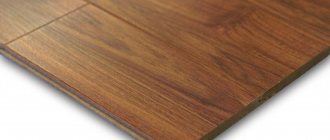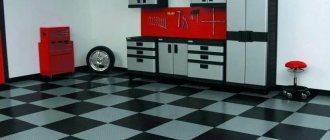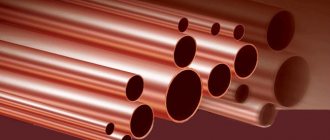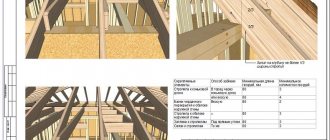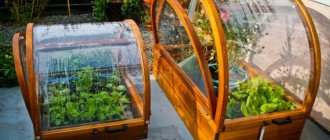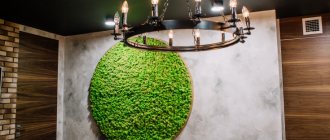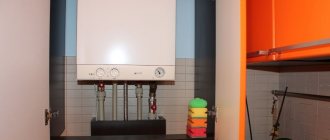When choosing a stepladder or ladder, you need to understand: will it perform its main functions? The equipment should help both with basic purposes (picking fruit hanging on a tree) and with complex tasks (construction, repairs). In other words, use should be convenient and safe. The editors of the YaNashla website propose to consider the rating of high-quality ladders and stepladders for construction. We'll tell you about the types, what to look for, what they are like, and how to choose the best one. Everyone can choose a suitable option from those proposed in the list.
Signs of an ideal stepladder
Each of us knows what a stepladder looks like. This is a folding ladder consisting of two rigid frames connected by a hinge mechanism. This design gets its name from the “stirrup” - the safety element of the stairs, which connects the two frames at the bottom of the stairs. This can be a tape or cable (soft element), or a metal strip (hard element). The stepladder is easy to unfold and assemble, and when unfolded it is reliable and stable. At least that's how it should be.
Reliability is explained by the shape of the stairs. When unfolded, it forms a triangle, which is called the “hardest” geometric figure. Another striking example is a gable roof.
A stepladder is an absolutely indispensable item both when performing repair work and in everyday life. Getting something from the mezzanine or from the top shelves of a closet, hanging a picture, painting a wall, hanging curtains, screwing in a light bulb, dusting cabinets, picking apples in the garden - all these and many other actions would be much more difficult to perform if we had Only a stool is available. The folded stepladder is relatively compact, so there is a place for it in any apartment.
An ideal stepladder should have the following properties:
- stability , on which the reliability of the ladder and the safety of the person standing on it depend. Whatever step you are on, the stepladder should remain motionless on the floor, not swing or slide. It is better if the stepladder has wide steps;
- convenience and safety . So that a person can comfortably carry out all work without fear of falling from the stairs, the steps must have special corrugation that prevents slipping. All metal sections must be covered with plastic covers to prevent them from getting caught by clothing or tools. The legs of the ladder should have rubber or plastic tips - they will not allow the ladder to move away on a slippery floor and at the same time protect the floor covering from scratches. On the steps of some stairs you can see rubber mats that perfectly prevent slipping and act as dielectrics;
- mobility . The ideal stepladder easily folds to the most compact size and unfolds, is easy to move and weighs little;
- high-quality assembly , on which reliability, mobility, and ease of transformation depend. Nothing in the stairs should creak or wobble, there should be no dents, burrs, or deformations;
- compliance with the scope of use. For household needs, it is stupid to buy a massive, heavy stepladder, just as a lightweight, low ladder is not suitable for constant repair work.
Step ladders differ in size, material, design and purpose. First, decide what you are going to do with the help of a ladder, and then it will be clear which of the masses offered on the market will be ideal for you.
Guarantee
Stairs and stepladders in Russia are not subject to mandatory certification. Some manufacturers provide a product warranty that includes repair of defective parts or complete replacement of the product.
The standard warranty period is 12 months. Usually it starts from the date of purchase. Each manufacturer lists its terms and conditions for fulfilling warranty obligations.
Most are limited to two points:
- manufacturing defects;
- low quality material.
The liability does not apply to malfunctions that arise during independent incorrect operation or assembly.
How to choose a stepladder height?
Perhaps the most important parameter when choosing a stepladder is its dimensions. You can find on sale both the smallest models and real giants. When choosing, you should take into account the height of the ceilings in the room and the height of the household. Let us note right away that models that are too tall are not needed for domestic use. If you climb onto the support platform or the top step, you will hit the ceiling, and even when folded for storage, the ladder will take up a lot of space, so it is better to take the most compact model possible.
When choosing, you will most likely come across such a concept as working height . It consists of the height from the floor to the working platform of the ladder and the height of a person with an outstretched arm. The second parameter can fluctuate significantly, but its average value, which is used by all manufacturers and sellers, is 2 m. That is. if it is indicated that the working height is 3.5 m, then this means that from the floor to the top step or working platform is 1.5 m.
For a standard apartment that does not have high ceilings, a stepladder with a working height of 3-3.5 m will be sufficient.
If you are short, then take a model with a margin of 0.3-0.5 m, since even with an outstretched arm it will be difficult for you to reach the estimated 2 m, and even if it is possible, you will have to constantly strain your arm, and no Comfortable work is out of the question.
The following classification of stepladders by size is also found
- up to 60 cm , these are those that provide a working height of about 2.5 m. They are called painting ladders or stool ladders. Usually they have 2-3 steps. An excellent compact option for home and apartments with low ceilings;
- up to 150 cm - this is the golden mean with a working height of up to 3.5 m. Excellent for interior finishing work. It is these stepladders that are in greatest demand;
- up to 180 cm allow you to achieve a working height of about 4 m, suitable for working in open spaces (in the garden, for example), as well as for commercial premises and houses with high ceilings;
- up to 280 cm They are distinguished by a retractable section design and are suitable for outdoor work, as well as for commercial and industrial premises. Use at home is pointless due to the high price, large size and weight.
Popular steel models
Alumet
The product itself is steel, only the steps are aluminum, but this stepladder is considered steel. A big plus: the legs do not slip, they have special valves. The height of the final platform is 166 cm. The product is equipped with an anti-corrosion coating, so its durability is ensured.
Eurogold 2024
A huge advantage of the model is the rubberized steps, there are 4 of them. The legs have plastic tips, the stepladder is stable and does not slip. The height of the platform is 92 cm. This staircase is especially popular among gardeners.
Nika SM3
Very convenient Russian model. Withstands up to 150 kg. The width of the stairs is 600 mm, which is very comfortable. There are rubber stops at the ends of the posts.
Review:
| Konstantin Pavlovich Artemyev, 58 years old |
| At home we have the Nika model. There are no complaints; the stepladder is almost ideal for household work indoors. There is somewhere to put the tool, where to rest your knees. But sometimes I take it out into the garden. It’s also easy to use there; you can’t dig it from this side. But over time, the steel began to rust, and quite quickly. This, from my point of view, is the only drawback of the model. |
Ladder material
The reliability, mobility, weight and price of a stepladder largely depend on the material from which it is made. Metal stairs are in greatest demand, but there are also other options on the market in a large assortment.
So, stepladders are made from the following materials:
- metal , incl. aluminum, steel, duralumin, silumin. Metal is characterized by maximum strength, durability and practicality. Aluminum and alloys are not afraid of corrosion, and products made from them are optimally balanced in price and quality; in everyday life, aluminum stairs due to their light weight, and professional builders usually choose more durable, stable and reliable steel options. In aluminum stairs, key elements are made of steel, which allows you to create both fairly strong and lightweight products;
- a steel ladder can withstand a decent load, but it itself weighs more than an aluminum ladder, inferior to it in terms of compactness and mobility;
Advantages
The advantages of a particular staircase depend on the type of material from which it is made.
- Wooden - low thermal conductivity, stability, environmental friendliness. The ability to independently replace failed parts.
- Aluminum - lightweight, easy to work and carry. Availability and design options for any task.
- Steel - can withstand heavy loads without loosening.
- Fiberglass - light weight and low thermal conductivity. Durable, applicable in all weather conditions.
Step ladder design
When choosing a stepladder, it is necessary to take into account not only the material and height, but also the type of construction, because the performance of the product also depends on it. The options are not as few as you might think:
- one-sided stepladders are a classic of the genre, in which the steps are located on one side, and the structure is crowned with a working platform, which serves as an additional fixation for the two parts of the stairs;
- double-sided stepladders , as you might guess, are equipped with steps on both sides, and instead of a traditional working platform, they use two converging steps;
- stepladders without stirrups , but this design is found only in products with at least 4 steps;
- telescopic stepladders are equipped with retractable legs, which allows you to precisely adjust the position of the ladder on uneven surfaces. Convenient and practical, but keep in mind that such a ladder will cost more than an analogue of the same height, but without telescopic legs, and it will also weigh more. This is due to a more complex design;
- transformable staircase It is distinguished by a complex design on hinges, thanks to which it can be used as an ordinary ladder, a classic stepladder or scaffolding. The height is also usually adjustable.
Repair
Malfunctions more often occur during incorrect operation - impacts, exceeding the permissible load. In case of manufacturing defects that lead to a malfunction, repairs are carried out under warranty. In other cases - paid in the service or on your own.
Frequent faults:
- breaking of steps - wooden variations are more often susceptible to it;
- turning out fasteners and brackets;
- bending and indentation as a result of impacts or excessive load;
- wear of safety cables.
Self-repair comes down to replacing the damaged element with a new one. You can purchase parts and fasteners separately.
Often broken steps are replaced with analogues from scrap materials that are made independently. In this case, the only difficulty is the imitation of the trapezoidal side slopes of the step, but most people do without it.
Replacement comes down to twisting the defective part, installing a new one and then fixing it with the provided type of fasteners - bolts, screws, fittings.
Additional design elements
Although two frames and steps are the most important elements of a stepladder design, they are far from the only possible ones. Thanks to additional elements, you can increase the safety of the staircase, make it more practical and even expand its functionality. Among these optional, but very useful additions, it is worth noting:
- rubber and plastic pads to protect sharp elements so that when performing work a person does not get caught in clothing or get injured. Metal stairs must have such pads on the sidewalls of the steps; other places are highly desirable for protection;
- Guys and guards allow the ladder to maintain the required angle while remaining stable and safe. A similar function is performed by the working platform, but if it is not there, then a safe angle can be fixed using folding metal or wicker ties;
- thrust bearings are a multifunctional element. Firstly, they prevent slipping on sometimes quite slippery home flooring (parquet, laminate, porcelain stoneware, tiles, etc.), and, secondly, they protect this same flooring from scratches;
- elements for fixing working tools are very necessary if the ladder is purchased for frequent or regular construction and repair work. For example, you can hang a bucket of paint on a hook, fix a tool on the hinges, and place brushes and rollers on the stands.
Video
Modern production also produces telescopic stepladders, the main advantage of which is their compactness:
The article will tell you how to take a responsible approach to choosing a reliable folding ladder, which is colloquially called a stepladder. You will learn how they differ in features and design features, as well as in purpose. The article will help to distinguish a professional ladder from a household one.
A triangle is the most rigid geometric figure. The two most common examples of its reliability are gable roofs and stepladders. However, in the second case, the elements of the figure represent a movable mechanism, the selection of which should be approached with special attention.
Purpose of the stepladder
From everything said above, the conclusion suggests itself that there are simpler household stairs, and there are much heavier, stable, high and functional stepladders for professional use. It’s quite easy to distinguish one from another in a store:
- household stairs have much less weight, since they are made of lightweight materials and, as a rule, can withstand no more than 100-120 kg. The height of such products is small, they fold easily, and you can find storage space in any apartment;
- professional stepladders They are distinguished by a reinforced structure, with steel used as the only material of execution or as a predominant one in combination with aluminum. These are the most reliable and stable ladders that can withstand a weight of 120 kg, so the master can take with him a fairly heavy working tool or even another craftsman. Typically, professional stepladders are equipped with additional elements; transformers and telescopic models are often found. Purely visually, a professional stepladder can be distinguished by the racks rolled into the profile, a larger distance between the steps and a larger cross-section of the racks and steps. Such structures are subject to mandatory certification for their safety.
Flaws
The disadvantages of stairs are also based on the properties of the materials. Structural defects are difficult to find.
Made of wood
- The material is subject to drying out and rotting, and over time deep cracks appear. These properties determine the relatively short service life of wooden stairs.
- The fasteners and grooves wear out and become loose with constant use.
- Requires protection with impregnation or varnish.
- Can withstand a load of no more than 100 kg.
- Wood also imposes structural limitations. For example, it is unlikely to find a transforming staircase made of this material.
Made of aluminum
- Sections are deformed during small impacts and falls more than structures made from other materials. The distorted area cannot be restored to its original form.
- Aluminum's electrical conductivity is its main drawback.
- Hinge joints and other places subject to friction lose reliability relatively quickly due to metal fatigue. These places become brittle; you need to monitor the condition of the connections, and, if necessary, lubricate and strengthen the fasteners.
- In industrial conditions, aluminum structures are less able to withstand loads than their counterparts made from other materials. However, the metal will withstand everyday use.
Of steel
The large weight of the structure and the inconveniences that arise during transportation are an obvious disadvantage. Besides:
- Susceptibility to corrosion - preventive work is labor- and time-consuming.
- Without finishing with vibration-damping materials, steel stairs are noisy - a metallic clang is heard when climbing them or transporting them.
- Unaesthetic welds.
- The complexity of painting - it will have to be renewed periodically, first removing old paint and traces of corrosion.
Steel structures become slippery and dangerous in winter.
Fiberglass stairs have no disadvantages in terms of application. The only negative is that fiberglass is not the most budget-friendly solution.
What to consider when choosing a household stepladder?
If the apartment has standard low ceilings, and a young and dexterous man will regularly climb a stepladder, then you can take almost any stepladder. The main thing is that it is sustainable. Everyone else should be more careful when choosing and take into account the following nuances:
- a staircase 1.5 m high is a universal option, but if you are short, it is better to take a slightly taller model;
- comfortable step depth is at least 12 cm, and the distance between steps is no more than 20 cm. The smaller the distance between steps, the more comfortable the staircase is to use;
- the width of the step is at least 50 cm, and the working platform can be 35 cm wide;
- the maximum load when on the work site is fixed for each model, so take into account the weight of those who will climb the ladder, and also take into account the range of work performed;
- the less space the stepladder takes up and the lighter it is, the better, but safety and reliability should not suffer;
- try folding and unfolding the stepladder in the store - these actions should not cause any difficulties;
- Also consider where you will store the stepladder. In a store, there can be a great temptation to take the one that is cheaper or more functional, and you can frivolously decide that you will come up with how and where to store it. Unfortunately, this mistake can ultimately result in a lot of inconvenience.
It is better to check the stability of the stepladder at the time of purchase, at the same time assessing the weight, compactness and build quality.
The article was written for the site.
Tags:Preparation for room renovation, Construction
Which ones are better
Pay attention to these aspects:
- Fastening the working platform, joints with steps - there should be no loose bolts; the option with rivets on the racks is not very reliable.
- Safety straps to prevent unexpected folding.
- The width of the steps determines whether it is possible to maintain balance on a stepladder; the wider they are, the better.
- The presence of a traverse and rubber caps on the legs for stability.
- The distance between steps is preferably less than 25 cm.
- Chips, cracks, and visual defects are unacceptable.
- Embossed or rubberized surface of steps - both options prevent slipping, but the second additionally protects against electric shock.
- Features of folding - releasing the latches on moving parts: rollers, hinges should not require physical force.
- Steps pressed into the grooves of the post are more difficult to break.
Additionally, the stability and mobility of the structure is checked.
Kinds
Metal mobile stepladders come in different varieties. Depending on the material they are made of, they have different characteristics.
Aluminum
Aluminum stepladders are widespread today. These options have the following differences:
- they are characterized by light weight, so they can be easily moved from place to place;
- since aluminum is coated with a natural oxide film, this material becomes more resistant to the formation of destructive corrosion;
- the designs of aluminum stepladders are simple and convenient;
- The models are distinguished by their versatility and safety.
The supports of such models are in most cases equipped with special non-slip materials, and the steps are made in relief.
Steel
Steel models of stepladders do not have any fundamental differences from their aluminum counterparts. However, they are more reliable, strong and durable. They can withstand more weight, and they are not at all afraid of mechanical damage.
But due to their heaviness, reinforced steel options may not be the most comfortable. According to users, such double-sided copies cannot boast of great mobility - moving them from place to place can be difficult.
Rating of the best manufacturers
Products from Russian and German manufacturers are popular on the Russian market.
Svelt
The Russian company offers a large selection of products for working at height. Svelt stairs have certificates confirming their reliability and safety.
"Eiffel Granite"
The company is the official dealer of Eiffel in Russia. Specialization – sale of ladders, stepladders for professionals and amateurs.
"New Heights"
Russian manufacturer specializing in the production of high-rise structures of a wide range: sliding stairs, stepladders, transformers, ladders, towers.
Hailo
A brand and manufacturer from Germany, known for the high quality of its products.
"Vortex"
Russian brand. Location of production – China.
Nika
The manufacturing company from Izhevsk has been producing household goods since 1998. Products are delivered to the largest cities of Russia and neighboring countries.
Krause-Werk Gmbh & Co. Kg.
The largest German concern, recognized as a world leader in the production of staircase structures.
Which one is preferable?
The choice of product is made not only on the basis of purpose. It is necessary to take into account the quality of the product. It is recommended to pay attention to the following parameters:
- the quality of welding at the junction of the steps to the structure; roughly welded steps will not be as reliable;
- the product must be evenly colored, without defects;
- stability of the assembled stepladder;
- same size of support posts;
- there must be an anti-slip coating;
- the presence of a corrugated surface of steps or a rubber mat.
High-quality models are more expensive, but they are safer and have a long service life. To determine which stepladder is better, you need to consider all the advantages and disadvantages of each of them, and then make a choice.
Comparison table of characteristics
The table below presents the main characteristics of the stepladder models under consideration. Compare them with each other and choose the device that suits your wishes and needs.
| Model name | A country | Variety | Peculiarity |
| Hailo 7 | Germany | aluminum product | high quality workmanship, durability |
| Eiffel Favorite 106 | Russia | aluminum stepladder | wide steps |
| Sibrtech 97896 with organizer | Russia | aluminum product | presence of a convenient organizer |
| Tdm SQ1028-0201 | Russia | retractable ladder | best price-quality ratio |
| Tikli 3x13 | Finland | retractable stepladder | high ladder, suitable for different types of work |
| Masterado 4x6 | Russia | aluminum transformable ladder | universal transformer |
| VORTEX LTA 4x4 | Russia | transformable staircase | affordable price and high quality |
Which stepladder to buy - steel or aluminum - depending on the application
If you plan to engage in large-scale professional work , then it is advisable to purchase a reliable steel structure. In addition to high strength, reliability and durability, steel models provide another advantage - you can use a hammer drill on such stairs.
For carrying out repair, construction and other work in apartments, private houses, small warehouses, and archives, light aluminum stepladders, rather than steel ones, are better suited. For home repairs, harvesting or caring for fruit trees, five-stage models are usually sufficient.
Rules of application
A metal stepladder should be used correctly so that all work is carried out as safely as possible.
- First you need to inspect the stepladder for damage. The design must not have defects, chips or creases. Check all fasteners: they must be reliable and strong. If there are any problems, you should not use the stairs for safety reasons.
- Never place a stepladder next to a door leaf.
- Two people cannot climb a stepladder at the same time. It is designed for one user only.
- It is necessary to correctly determine the shape that will be most convenient for carrying out the planned work, and place the structure in the desired position. Be sure to check the secure fixation of all existing sections.
- It is advisable to ask someone to help you when using the ladder.

